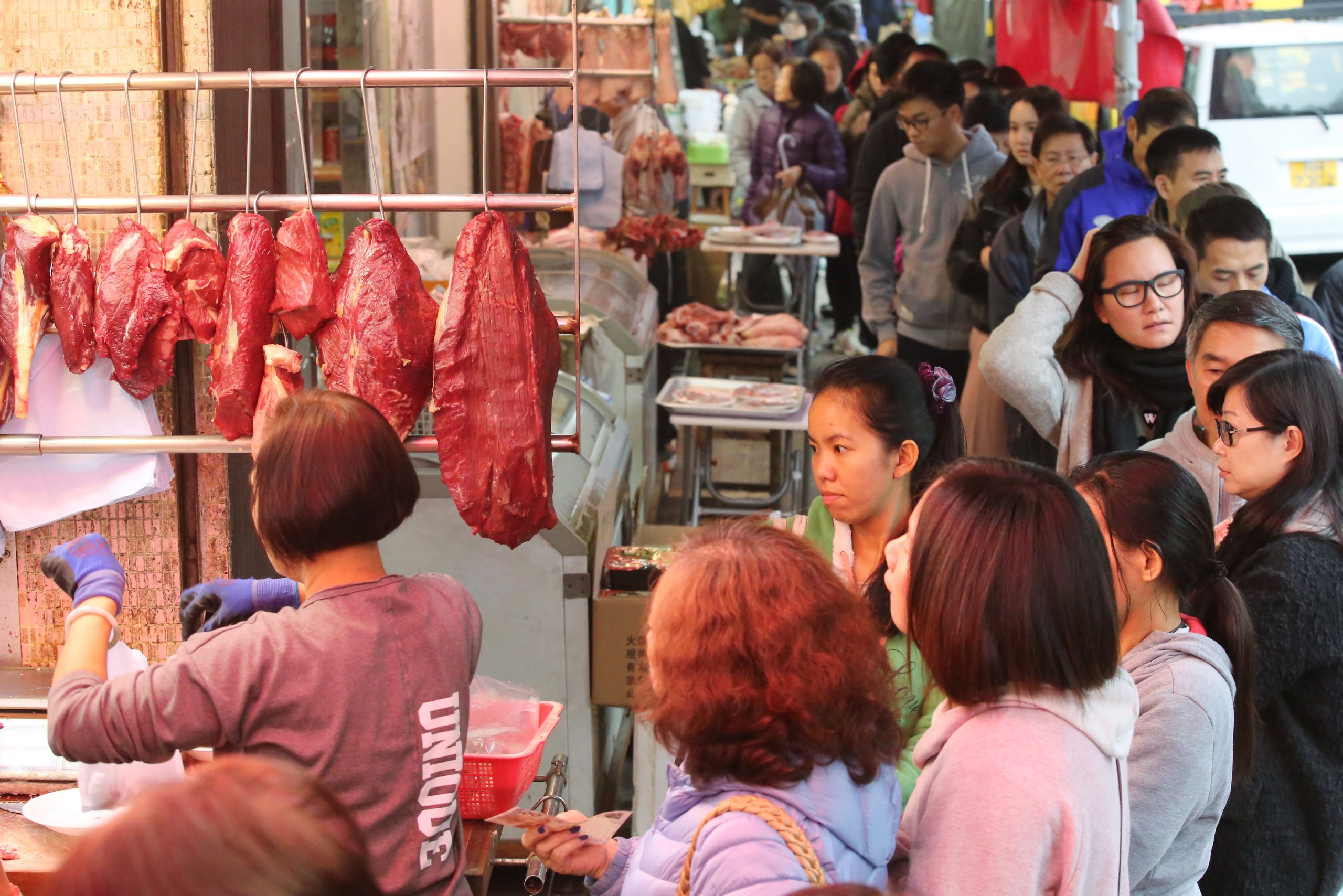- A coronavirus outbreak that originated in Wuhan, China, has killed at least 910 people and infected more than 40,500.
- Coronaviruses are zoonotic diseases, meaning they jump from animals to humans.
- The Huanan Seafood Wholesale Market in Wuhan may have been the starting point of the outbreak. It was shuttered January 1.
- At many wet markets, meat is sold alongside live animals. On January 22, Wuhan authorities banned the trade of live animals at wet markets.
- Here’s what the markets look like.
- Visit Business Insider’s homepage for more stories.
The coronavirus spreading in China and the SARS outbreak of 2003 have two things in common: Both are from the coronavirus family, and both most likely started in wet markets.
At such markets, outdoor stalls are squeezed together to form narrow lanes, where locals and visitors shop for cuts of meat and ripe produce. A stall selling caged chickens may abut a butcher counter, where meat is chopped as nearby dogs watch hungrily. Some vendors hock skinned hares, while seafood stalls display glistening fish and shrimp.
Wet markets put people and live and dead animals – dogs, chickens, pigs, snakes, civets, and more – in constant close contact. That makes it easy for zoonotic diseases to jump from animals to humans.
“Poorly regulated, live-animal markets mixed with illegal wildlife trade offer a unique opportunity for viruses to spill over from wildlife hosts into the human population,” the Wildlife Conservation Society said in a statement.
The specific market where the outbreak may have begun, the Huanan Seafood Wholesale Market in Wuhan, was shuttered January 1. Then on January 22, Wuhan authorities banned the trade of live animals at wet markets there. Last week, China announced a nation-wide crackdown on illegal wildlife markets and trade.
In the case of SARS and the new coronavirus, bats were the original hosts. The bats then infected other animals, which transmitted the disease to humans. The new coronavirus has so far killed at least 910 people and infected more than 40,500. (For the latest case total, death toll, and travel information, see Business Insider's live updates here.)
Here's what Chinese wet markets look like.
The Huanan Seafood Wholesale Market in Wuhan closed January 1 after it was found to be the most likely starting point for the outbreak of this coronavirus, called 2019-nCov.

A 61-year-old man was the first person to die from the virus. According to Bloomberg, he was a regular shopper at the Huanan wet market, which sold more than seafood.
Reports indicate that before the Huanan market closed, vendors there sold seafood, meat, and live animals, including chickens, donkeys, sheep, pigs, foxes, badgers, bamboo rats, hedgehogs, and snakes.
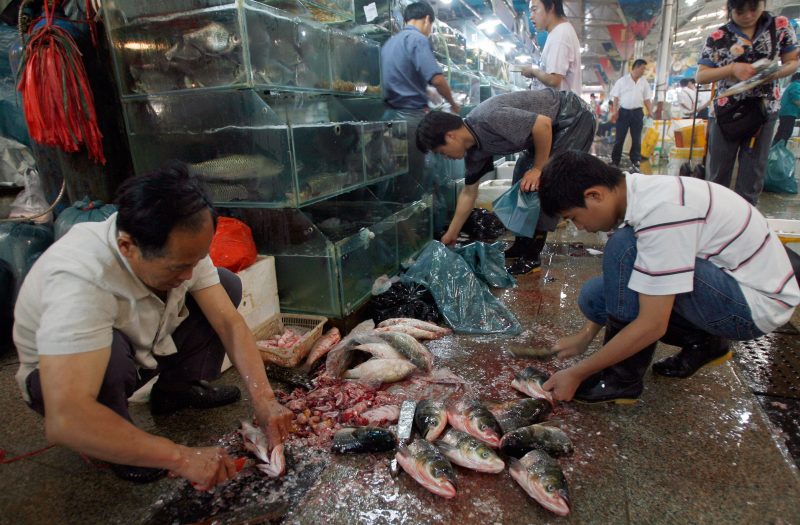
Wet markets like Huanan are common in China. They're called wet markets because vendors often slaughter animals in front of customers.
"That means there's a lot of skinning of dead animals in front of shoppers and, as a result, aerosolizing of all sorts of things," Emily Landon, an infectious-disease specialist at University of Chicago Medicine, wrote in an article.
A report published January 24 challenged the idea that virus emerged in the Huanan wet market, however.
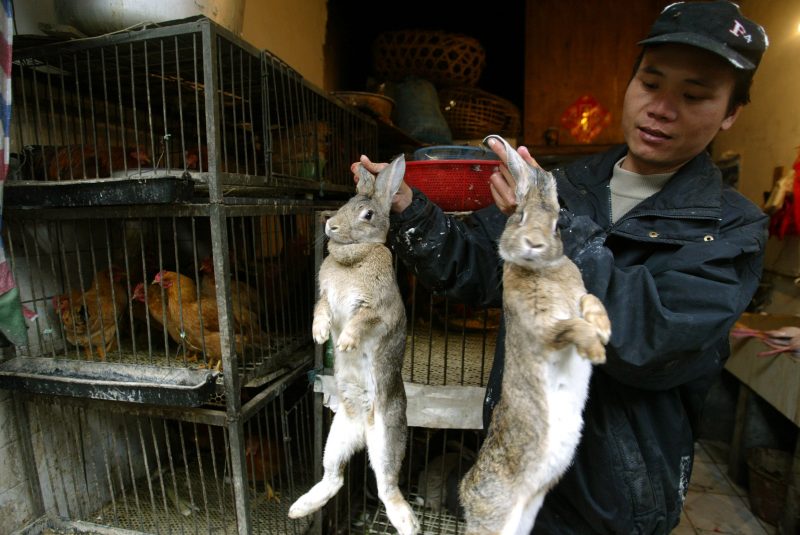
Chinese scientists found that the first reported case of the Wuhan coronavirus from December had no link to the wet market, according to Science, which cited a report published in the medical journal The Lancet.
What's more, 13 of 41 coronavirus cases had no link to the Huanan marketplace, the researchers said. More research is needed to pinpoint the outbreak's starting point with certainty.
Still, Wuhan authorities banned the trade of live animals at wet markets in the city on January 22.
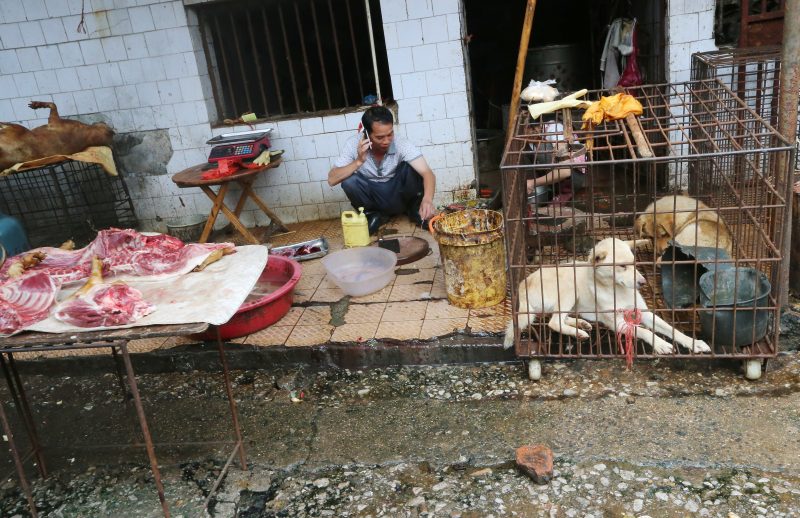
On February 3, the Chinese Communist Party issued a statement pledging to " resolutely ban and severely crack down" on illegal wildlife markets and trade across the country. China is also looking to escalate regulation and supervision of wet markets.
This type of intervention could help stop the spread of zoonotic viruses, experts say.
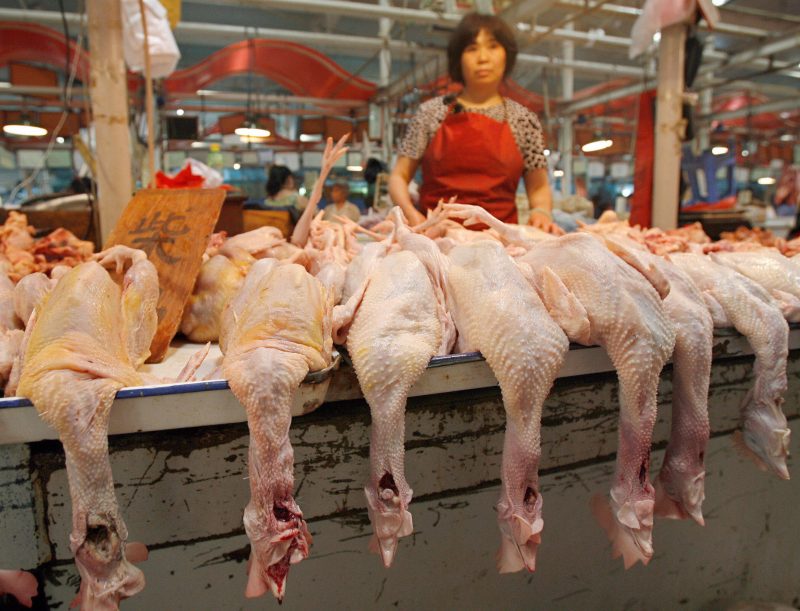
"Governments must recognize the global public health threats of zoonotic diseases," Christian Walzer, executive director of the Wildlife Conservation Society's health program, said in a statement. "It is time to close live-animal markets that trade in wildlife, strengthen efforts to combat trafficking of wild animals, and work to change dangerous wildlife consumption behaviours, especially in cities."
The close proximity of shoppers to stall vendors and live and dead animals in wet markets make them breeding grounds for zoonotic diseases.

Between 2002 and 2003, SARS killed 774 people across 29 countries. It originated in wet markets in the province of Guangdong.
In the case of SARS, humans caught the virus from weasel-like mammals called masked palm civets.
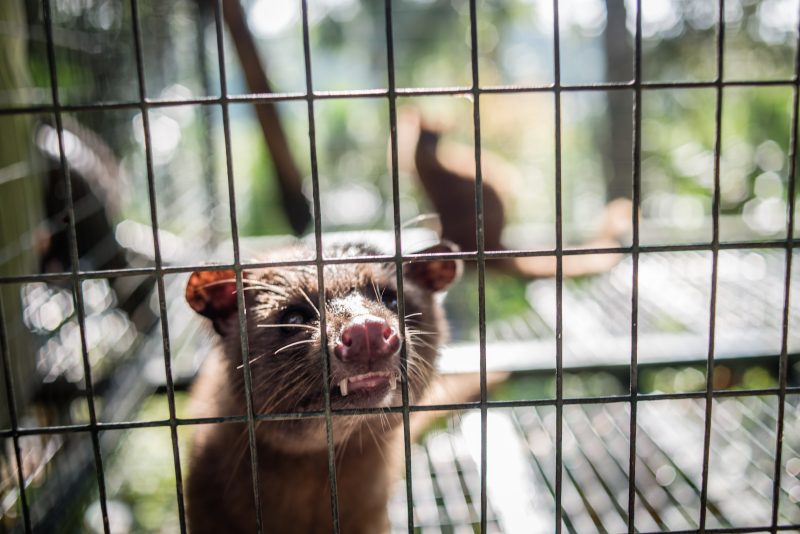
But the civets weren't the original hosts of the disease.
Researchers figured out that SARS originally came from a population of bats in China's Yunnan province.
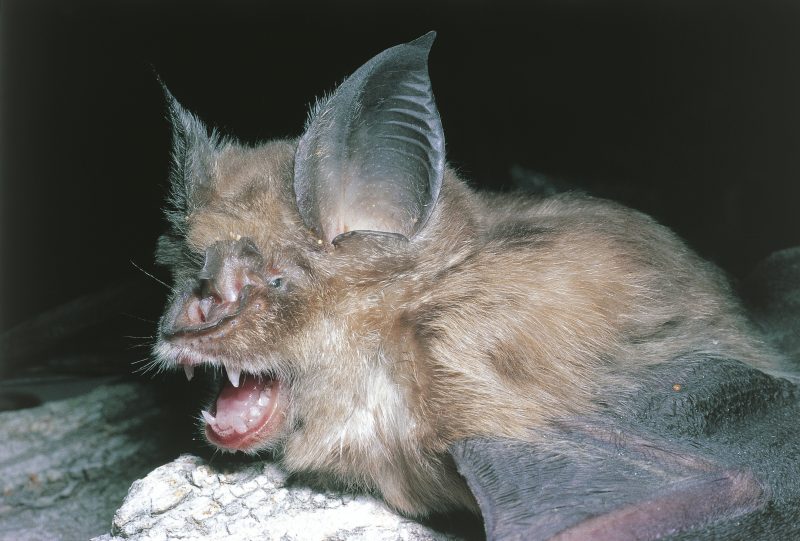
"Coronaviruses like SARS circulate in bats, and every so often they get introduced into the human population," Vincent Munster, a virologist at the Rocky Mountain Laboratories, told Business Insider.
Bats can pass along viruses in their poop: If they drop feces onto a piece of fruit that a civet then eats, the civet can become a disease carrier.
Experts haven't yet confirmed the animal species that enabled the Wuhan coronavirus to spread to people.
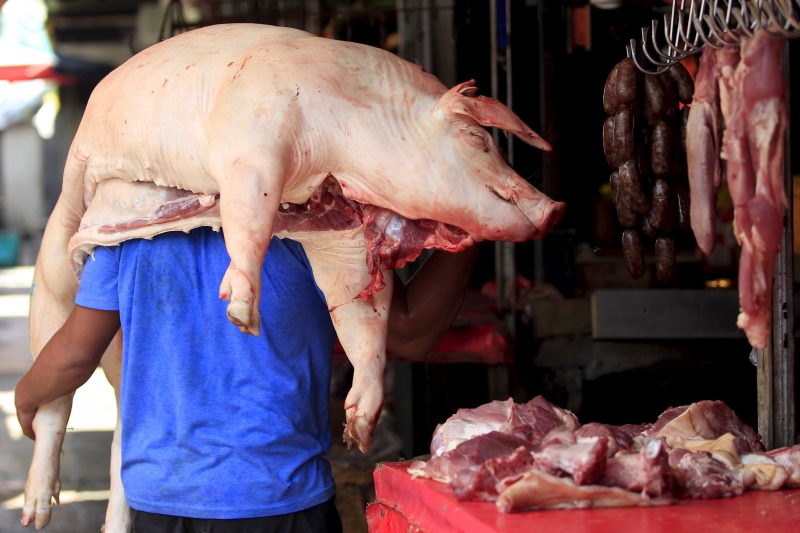
"There's an indication that it's a bat virus, spread in association with wet markets," Munster said.
When researchers compared the genetic code of the Wuhan coronavirus with other coronaviruses, they found it to be most similar to bat coronavirus samples. In fact, a study published February 3 found that the new coronavirus shares 96% of its genetic code with coronaviruses circulating in Chinese bat populations.
A group of scientists who edit the Journal of Medical Virology initially suggested the culprit in this case could be the Chinese cobra, but many other scientists say that's highly improbable.
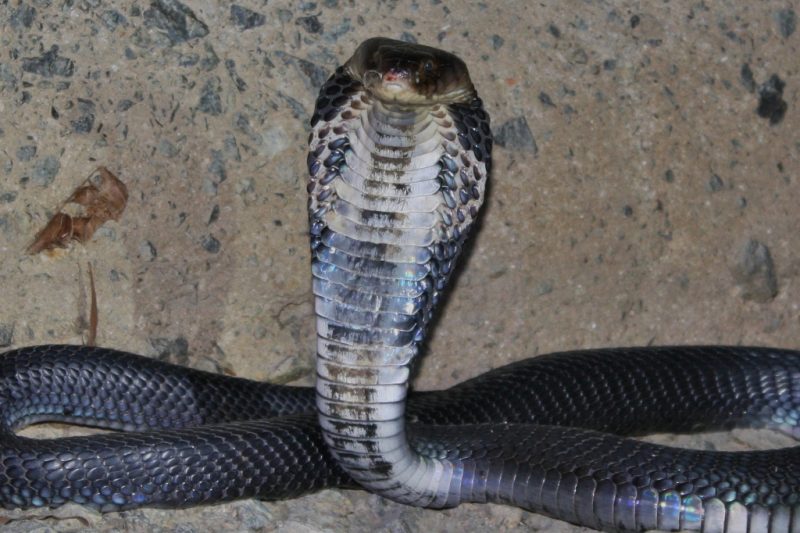
Virologist Cui Jie, who was on a team that identified SARS-related viruses in bats in 2017, told Nature that this coronavirus strain is clearly a "mammalian virus."
"They have no evidence snakes can be infected by this new coronavirus and serve as a host for it," Paulo Eduardo Brandão, a virologist at the University of São Paulo who is investigating whether coronaviruses can infect snakes, told Nature.
More likely intermediary-species candidates are pigs, civets, and pangolins.
A group of researchers from South China Agricultural University found that samples of coronaviruses taken from wild pangolins and those from infected coronavirus patients are 99% identical.
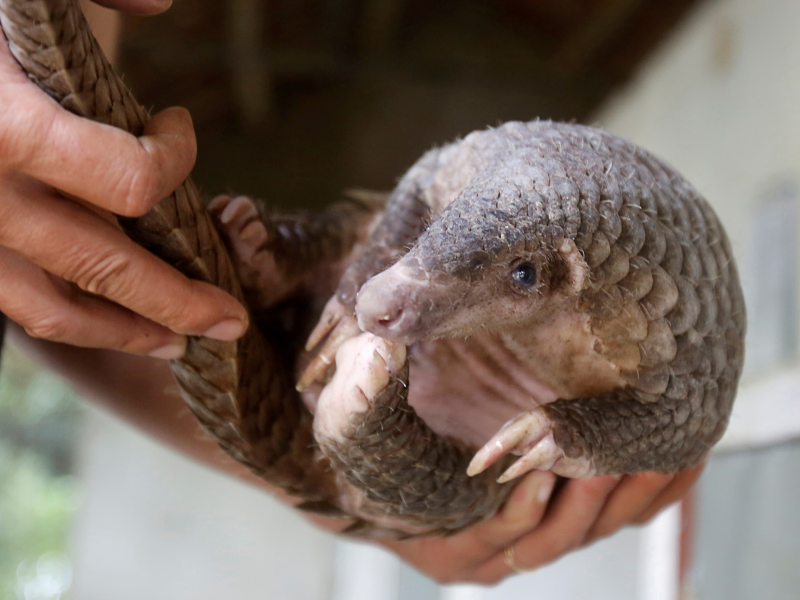
The pangolin is an endangered mammal that resembles a scaly anteater. But this research has yet to be published or confirmed by other experts.
The H7N9 and H5N9 bird flus — also zoonotic viruses — were likely transmitted to humans in wet markets, too.
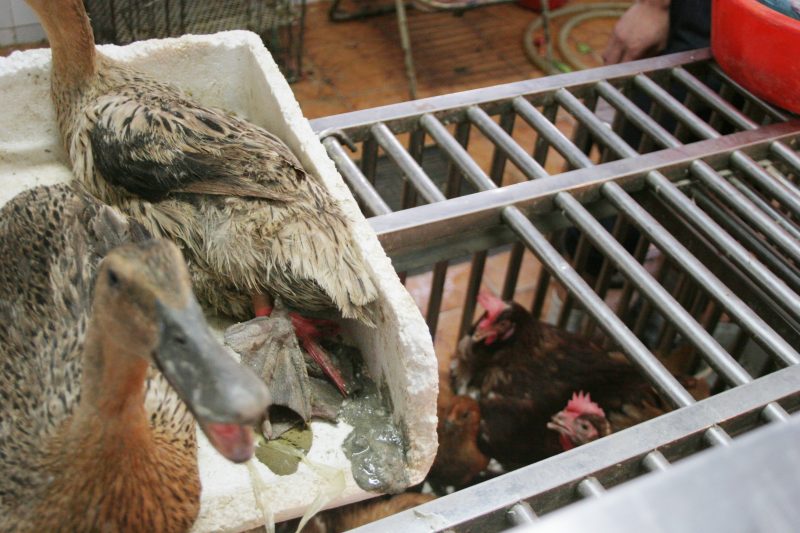
According to the World Health Organization, people caught those bird flus via direct contact with infected poultry in China. The diseases killed 1,000 people globally.
Bats and birds are considered reservoir species for viruses with pandemic potential, according to Bart Haagmans, a virologist at the Erasmus Medical Center in Rotterdam, Netherlands.
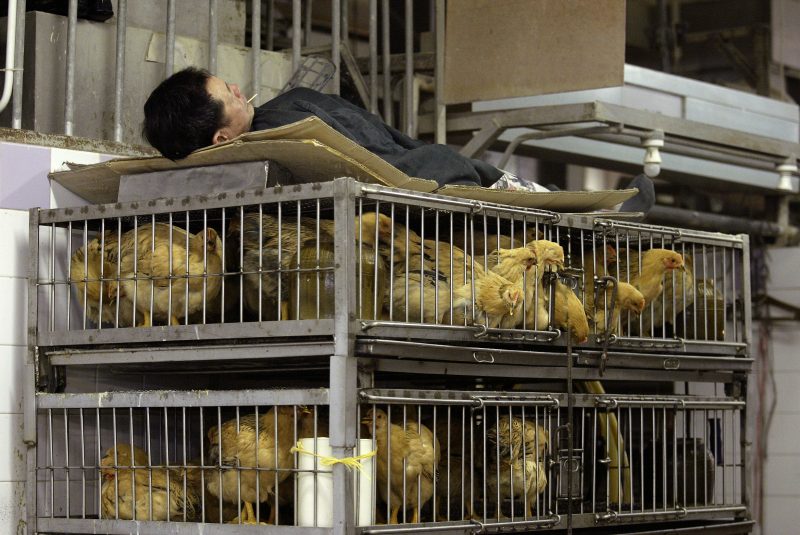
"Because these viruses have not been circulating in humans before, specific immunity to these viruses is absent in humans," Haagmans told Business Insider.
"There have been plenty of eminent epidemiologists predicting 'pandemic X' for a number of years now," Adrian Hyzler, the chief medical officer at Healix International, told Business Insider.

These pandemics "are more likely to originate in the Far East because of the close contact with live animals [and] the density of the population," Hyzler added. His firm offers risk-management solutions for global travelers.
The Wuhan coronavirus outbreak isn't considered a pandemic, however.

Since December 31, more than 40,500 cases of the Wuhan coronavirus have been reported across 26 countries, including the US. Symptoms include sore throats, headaches, and fevers, as well as pneumonialike breathing difficulties.
Aria Bendix contributed reporting to this story.
- Read more about the Wuhan virus:
- Everything we know about the deadly Wuhan virus sweeping across China
- Health experts issued an ominous warning about a coronavirus pandemic 3 months ago. The virus in that simulation could kill 65 million people.
- The Wuhan coronavirus has spread to at least 26 countries. Here's how to protect yourself while traveling.
- Experts think the Wuhan coronavirus jumped from bats to snakes to people. Bats have been the source of at least 4 pandemics.

